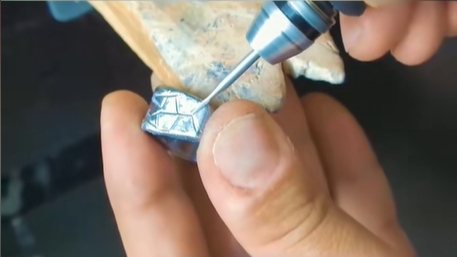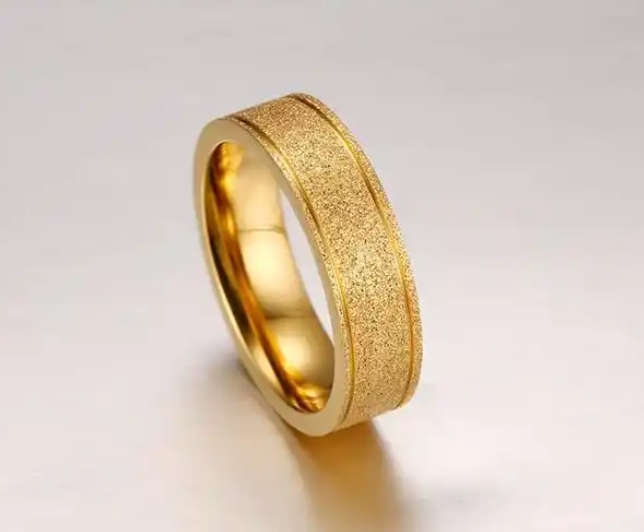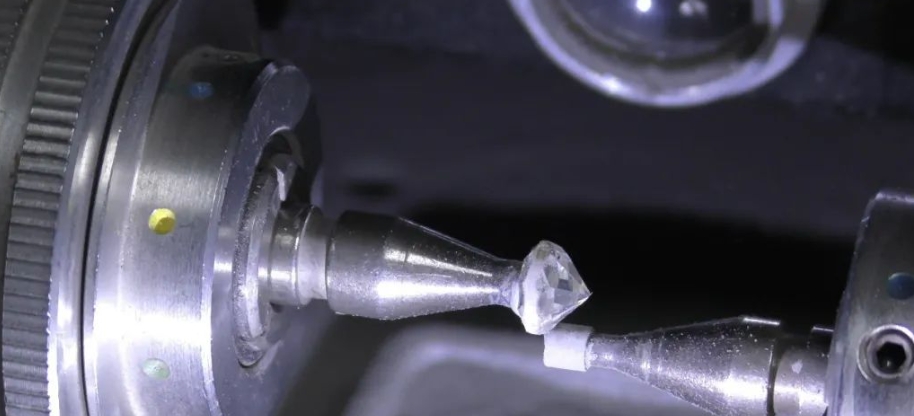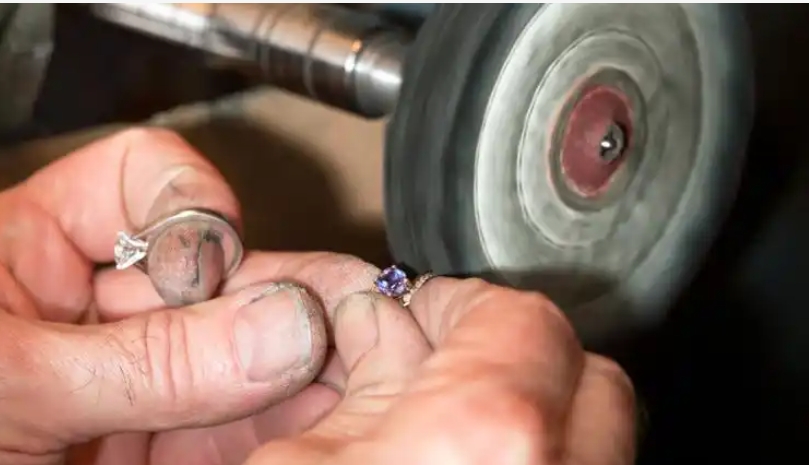Learning Sandblasting, Polishing, Sanding, and Brushing Before Creating Your Own Jewelry Brand
Starting your own jewelry brand is a thrilling and rewarding journey. As you embark on this venture, it’s crucial to have an understanding of the various techniques that elevate the aesthetic appeal and durability of jewelry pieces. One of the most important aspects of jewelry design is surface treatment. Different surface finishing techniques can dramatically change the look, feel, and texture of your jewelry. Whether you are focusing on gold, silver, or copper jewelry, mastering surface treatment methods can ensure that your brand produces high-quality, unique designs.
In this article, we will explore four key surface treatment techniques commonly used in the jewelry industry: Sandblasting, Diamond Polishing, Sanding, and Brushing. These methods not only enhance the appearance of your pieces but also provide functional benefits such as improving the texture and ensuring longevity. If you’re serious about creating your own jewelry brand, understanding these techniques will be vital in developing your distinctive style and offering exceptional products to your customers.
1. Sandblasting: Creating a Matte Texture with a Professional Touch
What is Sandblasting?
Sandblasting, also known as abrasive blasting, is a process in which a stream of compressed air is used to propel fine particles of sand (usually quartz) at high pressure onto the surface of the jewelry. This technique is commonly used to achieve a matte finish on jewelry pieces, giving them a soft, textured appearance.
The sandblasting process not only creates a unique visual effect but also imparts a distinct tactile quality to the jewelry. It’s particularly useful for adding a luxurious feel to pieces like rings, bracelets, and pendants, making them stand out with a touch of sophistication and modernity.
Benefits of Sandblasting in Jewelry:
- Unique Texture: The matte finish created by sandblasting adds depth and complexity to the surface of the jewelry. The fine abrasive particles produce an even texture that enhances the visual appeal of the piece.
- Sleek and Modern Appearance: Sandblasting imparts a contemporary, industrial look, making it popular for both high-end fashion jewelry and men’s collections.
- Customizability: Different grades of sand and varying blasting techniques can produce different textures, allowing you to create a range of finishes that match the overall aesthetic of your jewelry collection.

When to Use Sandblasting:
Sandblasting is ideal for pieces that need to stand out in a crowd. It’s often used on rings and pendants, as well as other accessories like bracelets and cufflinks. If you want to create a tactile feel on a high-contrast surface or highlight certain design elements, sandblasting is a perfect choice.
2. Diamond Polishing: Adding a Radiant Shine
What is Diamond Polishing?
Diamond polishing is an advanced surface treatment technique that uses a diamond-encrusted tool to polish the surface of the jewelry, typically metals like gold, silver, and platinum. This technique is employed to produce a high-gloss, mirror-like finish, and it is most commonly used on fine jewelry that requires a pristine, sparkling appearance.
The polishing process is done by applying a small amount of abrasive compound to the jewelry surface, which is then buffed using the diamond tool. This results in a smooth, reflective surface that enhances the inherent shine and luster of precious metals.
Benefits of Diamond Polishing in Jewelry:
- Highly Reflective: The most significant advantage of diamond polishing is the brilliant shine it imparts to jewelry. The smooth, reflective surface makes the metal appear more radiant and catches the light beautifully.
- Enhanced Durability: Polishing also serves as a protective layer, helping to resist tarnishing and scratching over time. The smoothness of the surface means that there is less friction against other surfaces, prolonging the lifespan of the jewelry.
- Elegant Finish: A diamond-polished finish gives the piece a refined, luxurious look, making it a favorite for fine jewelry collections, particularly engagement rings, earrings, and necklaces.
When to Use Diamond Polishing:
Diamond polishing is best suited for jewelry pieces where the appearance of high shine and flawless smoothness is the focal point. It’s often used on rings, necklaces, and earrings, particularly those designed for formal occasions or high-end retail. If you are creating a brand focused on luxury and elegance, diamond polishing is an essential technique for elevating your products.
3. Sanding: Creating Matte, Sculptural Surface Effects
What is Sanding?
Sanding is a process in which fine-grit sandpaper is used to smooth the surface of the jewelry. It is an ideal technique for creating a matte finish that emphasizes the sculptural details of the design. Unlike diamond polishing, which results in a shiny surface, sanding leaves behind a soft, smooth texture that can add depth and character to a piece.
Sanding can be done by hand or with machines, depending on the level of precision and the type of texture required. The use of different grit sizes in the sandpaper determines the final effect, from a very fine matte surface to a more pronounced, rough texture.
Benefits of Sanding in Jewelry:
- Distinctive, Sculptural Finish: Sanding helps to bring out the intricate details of a piece, such as engraved patterns or textured surfaces. The matte finish gives the jewelry a more artistic and tactile feel, adding personality to the design.
- Versatility: Sanding is versatile and can be used on a variety of metals, including gold, silver, and copper. By adjusting the sanding method, you can create different finishes to suit your brand’s aesthetic.
- Enhanced Depth: The process adds depth and dimension to jewelry, particularly in pieces with intricate carvings or sculptural designs. The matte texture contrasts beautifully with shiny elements, creating a dynamic, multi-layered effect.
When to Use Sanding:
Sanding is perfect for jewelry designs where texture plays a significant role in the overall look. It is often used on rings, bracelets, and pendants that feature abstract or organic shapes. Sanding can also be applied to vintage-inspired pieces that require a matte, aged appearance, or on contemporary designs with minimalist aesthetics.
4.
What is Brushing?
Brushing, also known as wire brushing or satin finishing, is a process in which a rotating wire brush or abrasive tool is used to create fine linear textures on the surface of jewelry. This technique produces a soft, satin-like finish that is more subtle than sandblasting but still has a distinct texture that is both matte and reflective.
Brushing is typically done by hand or using automated machinery, depending on the desired outcome. The lines created by the brush are often subtle but add a refined, contemporary appearance to the jewelry piece.
Benefits of Brushing in Jewelry:
- Subtle Matte Finish: Brushing creates a satin or matte finish that is soft and understated. The lines add an elegant texture without being too bold or distracting, which is ideal for those who prefer a more minimalist aesthetic.
- Durability and Resistance to Scratches: The brushed surface is less likely to show scratches compared to highly polished surfaces. This makes it a practical choice for jewelry pieces that are worn frequently, such as rings or bracelets.
- Classic and Timeless Look: Brushed finishes are often used in more classic or refined jewelry designs. It’s particularly popular in men’s jewelry, such as wedding bands and cufflinks, because it creates a sophisticated, understated look.
When to Use Brushing:
Brushing is an excellent choice for creating jewelry that combines elegance with durability. It’s commonly used for wedding bands, rings, and necklaces that require a polished yet matte appearance. If your brand targets individuals who appreciate classic, minimalist designs, brushing will be a key surface treatment technique in your collections.
Conclusion: Mastering Surface Treatment for Your Jewelry Brand
Before starting your own jewelry brand, it’s crucial to learn and understand the various surface treatment techniques that will define the aesthetic and functionality of your pieces. Sandblasting, diamond polishing, sanding, and brushing each offer unique advantages, and knowing when and how to use these techniques will enable you to create jewelry that stands out in the market.
For a jewelry brand focusing on gold, silver, and copper, these techniques will allow you to craft pieces that not only look stunning but also feel exceptional to the touch. By combining different surface treatments, you can develop a signature style that reflects your brand’s identity and appeals to your target market.
If you’re ready to take the leap into the world of jewelry design, make sure you invest time in mastering these techniques. They will serve as the foundation for your creative process, helping you create jewelry that captivates your audience and establishes your brand as a leader in the industry.



